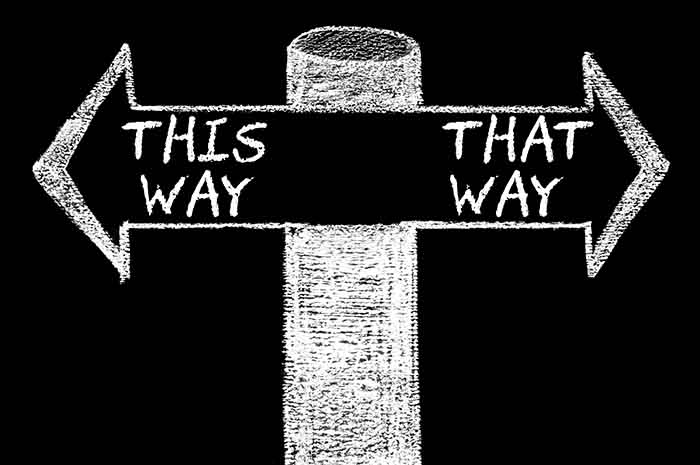Before I go on, I’ll say this: as a small business owner running both an e-commerce brand and an outsourcing service, I understand—with every fiber of my being—the need to hire help. When you’re starting out, there are countless things you either don’t know how to do, don’t want to learn to do, or simply don’t have time for. Affordable help can be IS an absolute game-changer.
I completely understand how easy it is to trust someone to take care of complex parts of the business. But it’s important that you dig a little deeper to ensure your money is being well spent.

If you’re going to hire someone—especially an expert—you need to keep a close eye to make sure you get a return on your investment (ROI). The responsibility lies with you, and only you, to ensure the people you hire are delivering results. This is especially true when it comes to marketing services. Tracking ROI in marketing spend, while not always easy, is far more straightforward compared to operational tasks.
A recent situation reminded me of how common it is for businesses to misunderstand the difference between boosted posts and targeted ads. So let’s go through it.
The Cost of “Boosted” Assumptions
When I think about running an ads, for one of my companies, I envision a process that involves:
- Going into Facebook Business Manager
- Defining a particular target audience
- Writing compelling ad copy
- Choosing imagery that evokes emotion
- Setting a budget
- Monitoring and tweaking ads to optimize performance
- Tracking on Google Analytics to see if everything matches up
- and finally in the CRM to make sure there is a conversion element happening!
To me, running ads is all about measuring results: clicks, interactions, conversions, and identifying bottlenecks. It’s tedious work, but if I’m spending someone else’s money, I want to know every single detail about what’s working and what’s not.
In this particular situation I learned, however, the ad strategy being used was simply boosting Facebook posts. That’s it. The entire ad budget was being spent on boosted – non -targeted – posts. 😳
Boosting may be fine if your goal is to get more eyes on a specific piece of content without much concern for who sees it. But if you’re trying to generate meaningful engagement, conversions, or sales with your specific client avatar, boosting your posts is a complete waste of money (WOM!)
Boosted posts lack advanced targeting, optimization, and measurement tools that true Facebook Ads offer. Essentially, they’re the “set it and forget it” option for beginners—and they can be an expensive trap.
I wanted to clarify this for myself, to make sure my ego wasn’t haivng a moment, LOL, so I asked chat GPT and Claude to help me pull together a little data to share. So here we go!
Why Boosted Posts Are Not the Same as Ads
Key Metrics
- Cost Per Click (CPC):
- Ads: $0.50-$2.00 average
- Boosts: $1.00-$3.00 average
- ROI Metrics:
- Ads offer 20-30% better conversion rates
- Ads provide 15-25% lower cost per acquisition
Key Advantages of Ads:
- Advanced targeting options
- Placement control (e.g., Instagram, Messenger, Facebook feed)
- Custom and lookalike audiences
- A/B testing capabilities
- Detailed performance metrics
Boosted Posts Limitations:
- Basic targeting
- Limited to promoting existing posts
- No optimization for specific goals (e.g., conversions or lead generation)
- Restricted placement options
- Limited performance data
For small businesses, Facebook Ads typically deliver 2-3x better ROI compared to boosted posts when properly optimized. Boosted posts may suffice for increasing engagement on a specific post, but they’re not the right tool for driving targeted traffic, generating leads, or achieving broader marketing objectives.
Lessons Learned
If you’re spending money on marketing, PLEASE, please, PLEASE be strategic. Throwing money at boosted posts without a clear plan is like putting gas in a car without knowing the destination. You might go somewhere, but it’s unlikely to be where you want to end up.
This experience reinforced the importance of:
- Knowing the Difference: Understand the tools available to you and what they’re best suited for.
- Holding People Accountable: Whether it’s an employee, freelancer, agency, etc., make sure this person is tracking that there is a results. Full transparancy.
- Investing in the Right Strategy: If you’re hiring someone to manage ads, please make sure they’re doing more than just boosting your posts. This is a incredibly lazy way of doing things, any ole monkey can click boost. Your person needs to be leveraging the full capabilities of Facebook Ads Manager to maximize YOUR ads money.
Final Thoughts
As a business owner, every single dollar you spend needs to be working for you. Marketing is definitely no exception. While it’s tempting to go for the quick and easy option, like boosting posts, taking the time to develop a proper advertising strategy can make all the difference.



